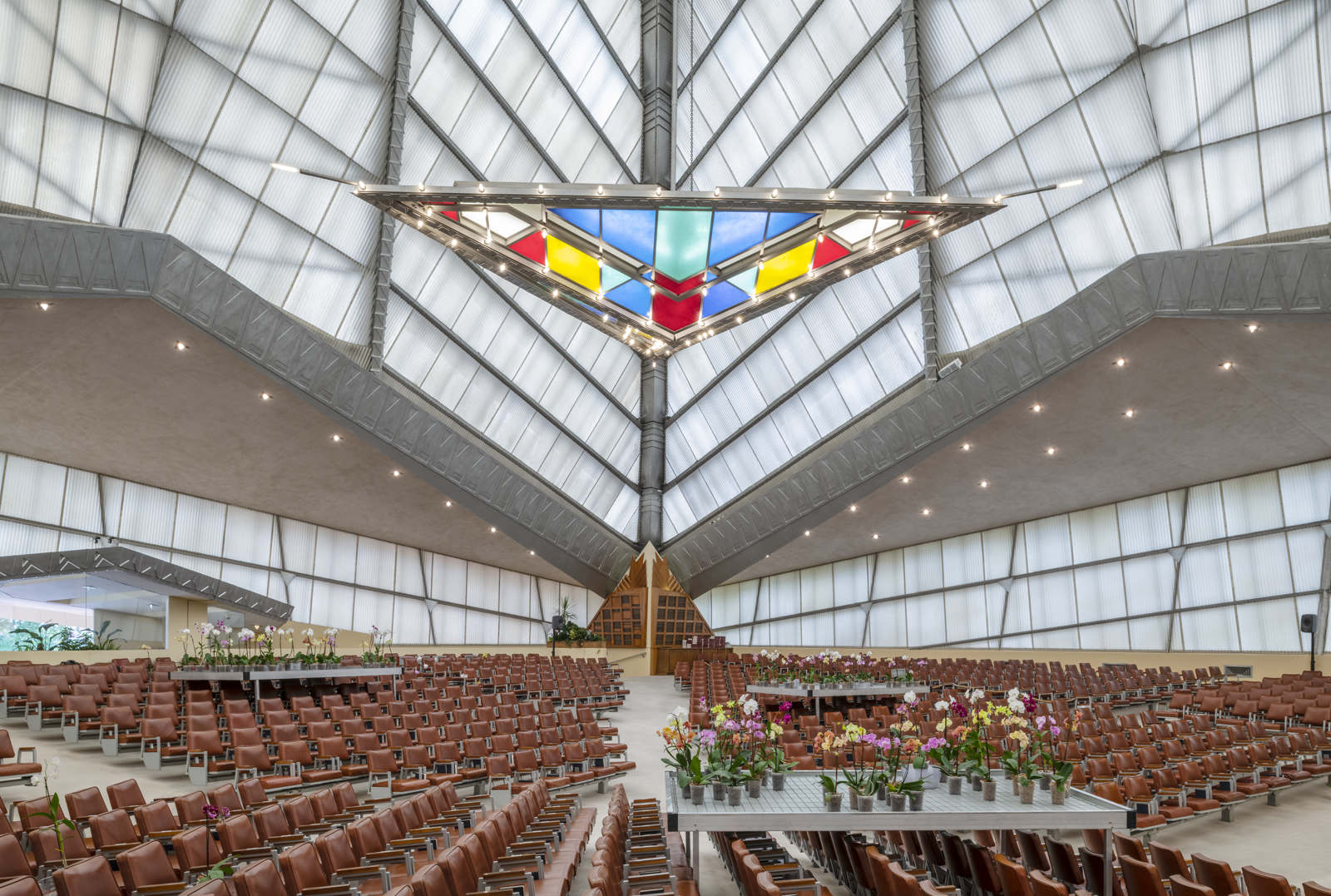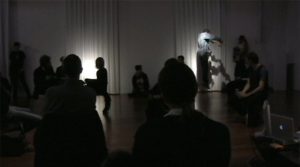
In Mechitza 7.1, using interactive audio, an elision is made between sacred/taboo space, and ‘ethnically cleansed’ space as a way to interrogate the notion of border and binaries. Mechitza 7.1 reflects on the segregatory architecture, imposed by the state, that controls public and private space. Performance artist Tobaron Waxman collaborates with dancer Jesse Zaritt and composer James Hurley to create a motion-activated surround sound environment using field recordings that Waxman made in domestic spaces in the occupied territories of Palestine and in men’s prayer spaces from his Chassidic life in New York.
Mechitza 7.1, Demonstration (part A) stereo mix by James Hurley, 23:31, 2010. Note: Audio is best experienced on headphones.
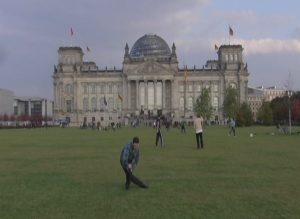
Waxman and Zaritt developed nine distinct movement vocabularies. Each of these movement languages articulates a different relationship between the dancer’s body and the ideas of border, boundary, and confinement. They organized these movement vocabularies into a score, each as a playback trigger for a specific sound fragment related in motif, theme, or content. The sound fragments are the result of Waxman disseminating their field recordings to sound artists, students, and composers internationally, each of whom was provided with a series of directives to which their edit/shattering/reconstitution of the field recording was to respond. Zaritt was provided the same directives and asked to respond with gesture and movement. The map of how these nine movement languages exist in space (i.e. a sound and movement score) is included as a scanned image below.
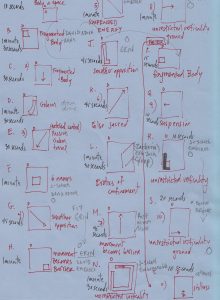
-
- Perform fragmented visibility: move such that only portions of your body are visible to the viewers, allow parts of the body to slip in and out of visibility, as if the movement is being viewed through cracks in a wall.
- Perform the construction of a Golem: manipulate the body as if it is clay/stone made animate and controlled by an external force.
- Perform the smothering of opposition: stomp and trample along a straight path through the space, try also to divide the space with this forceful wall of deliberate, harsh steps.
- Perform confinement and the escape from confinement at the same time: allow the body to move as if it can rapidly shift between solid, liquid, or gas.
- Perform movement as barrier: let every movement initiated by the body harden into a physical barrier in the space.
- Perform the suspension of potential energy: sustain off-balance positions as long as possible before letting the body fall along a straight path through the space.
- Perform the construction of false sacred space: build a structure for prayer through dancing in a linear manner. Allow a resonance of folk and ritual dance to be present in the movement.
- Perform the erotics of confinement: force open orifices in your body.
- Perform unrestricted verticality: perform the yearning for freedom as represented by a body attempting to be unrestricted by gravity.
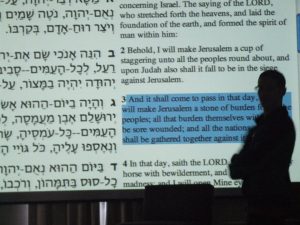
Audience member and theorist Benjamin Dawson recounts his experience:
Waxman and Zaritt’s collaborative sound and dance installation offers a searching and unassured approach to spectacle, consecration, division, and reappropriation — or, perhaps, profanation. Mechitza 7.1 is a separation architecture, whose name refers us to the division of men and women within the synagogue (a separation whose legality or conventionality—i.e. its source in Torah or Talmud—has long been contested), constructed out of an archive of voices and sounds separated from their immediacy, their context—abducted and deranged. In this space, a figure performs a sequence of movements, both visceral and abstract. His body appears as if exposed to invisible powers, manipulated or conducted by forces connected, in an uncertain or incomplete manner, to the sounds which compose the space, the sanctum (?), through a kind of continual, fractal partitioning. Somehow jarred yet fluid, impersonal yet singular, the dance seems to offer the analogue or cipher of the hinge between the concrete and the consecrated. That is to say, the body appears both here, with us in the room, and somewhere else, in the realm of sound perhaps, from where it comes to us or into which it is being taken. The peculiar power of the work may, I think, have to do with its extended uncertainty regarding the making and unmaking of this boundary, which is to say its hesitation or equivocation between the processes of consecration (separation) and profanation (retrieval).
In an effort to offer a kind of oblique commentary on this experience, I will return us to the site of a decisive moment in the adolescence of Western culture: Pompey’s notorious astonishment and disappointment, upon entering the Arcanum of the Temple, expecting (as Hegel puts it) “to find indeed in one central point the life-giving soul of this remarkable people, to gaze on a Being as an object for his devotion, on something significant for his veneration, […] to find himself in an empty room.” In this moment, astonishment (turning to stone), the shock of disappointment, and the feeling of expectations “deceived” (Hegel) — i.e. those expectations of Presence (“Being”) and Life which are so central to Christian/post-Christian societies — coincide in an experience of absence.

